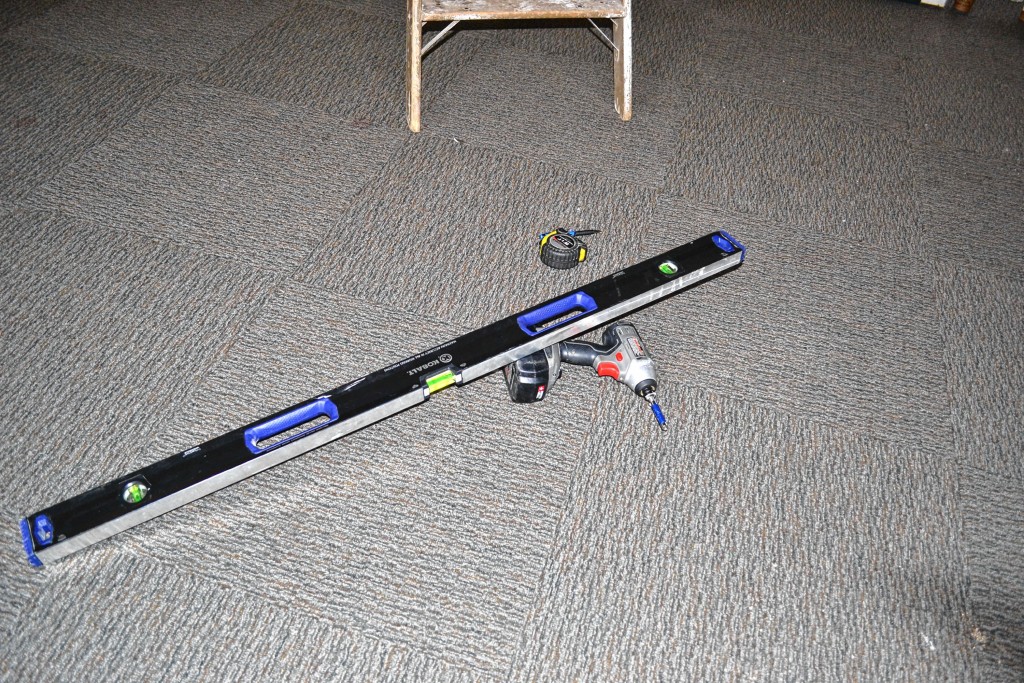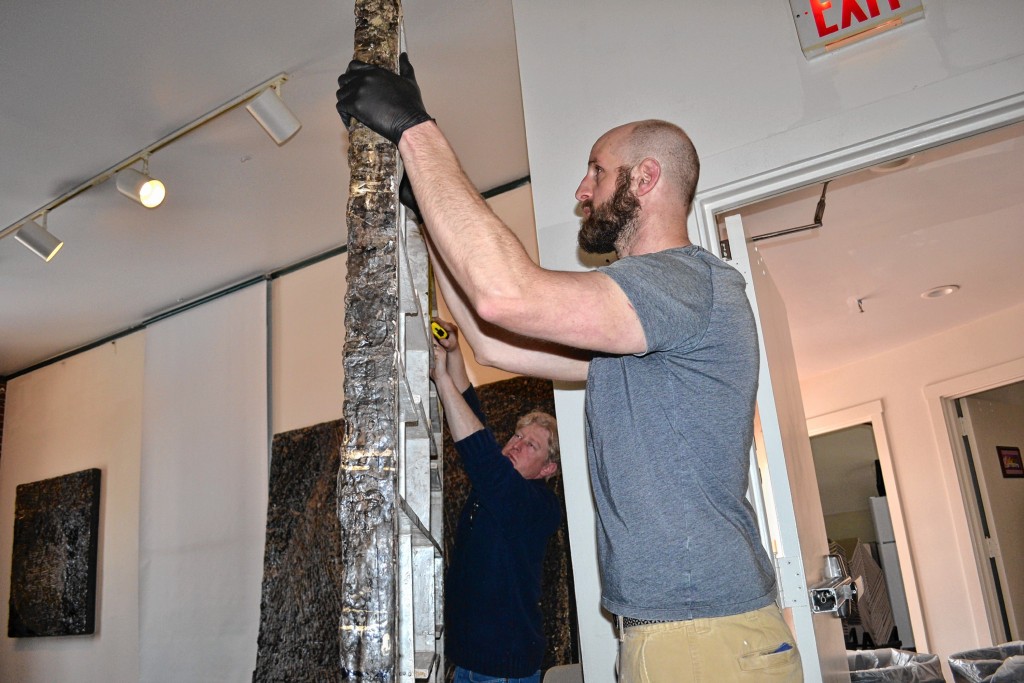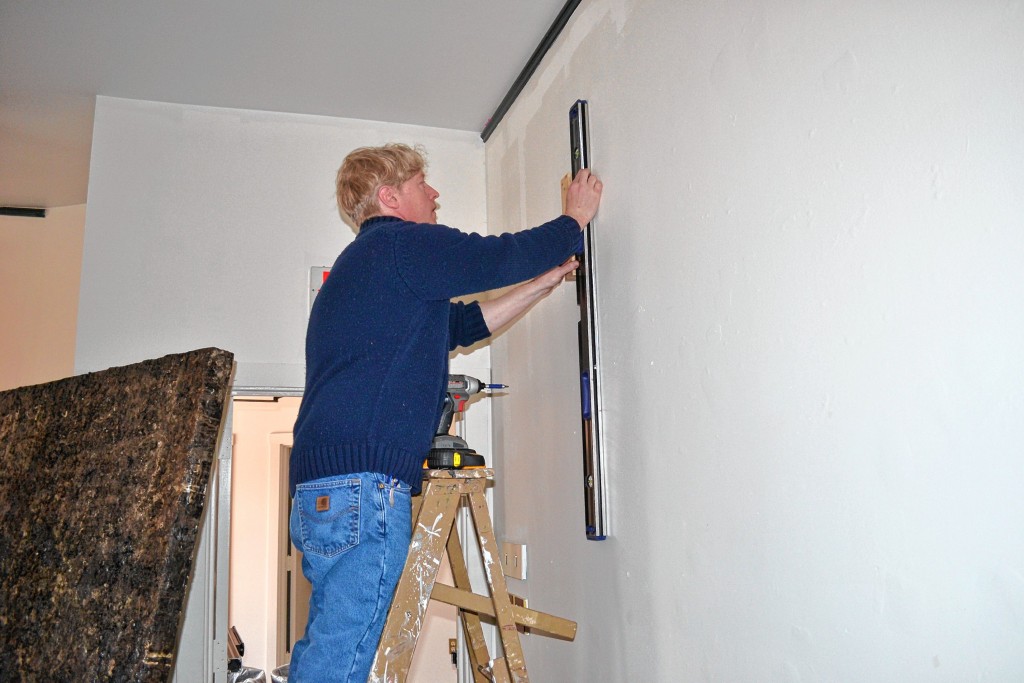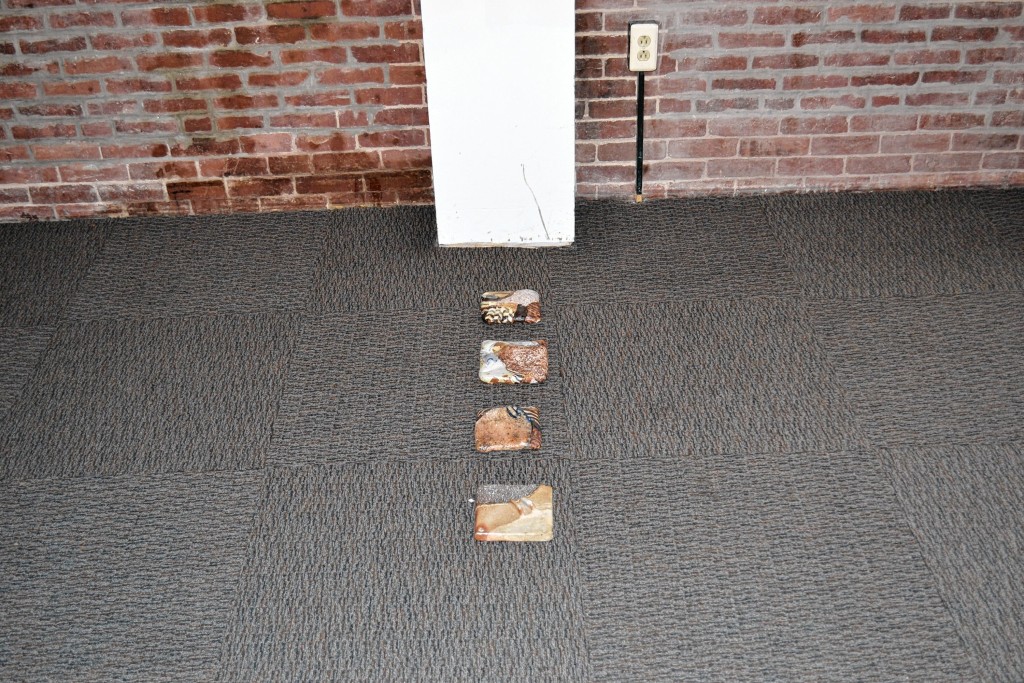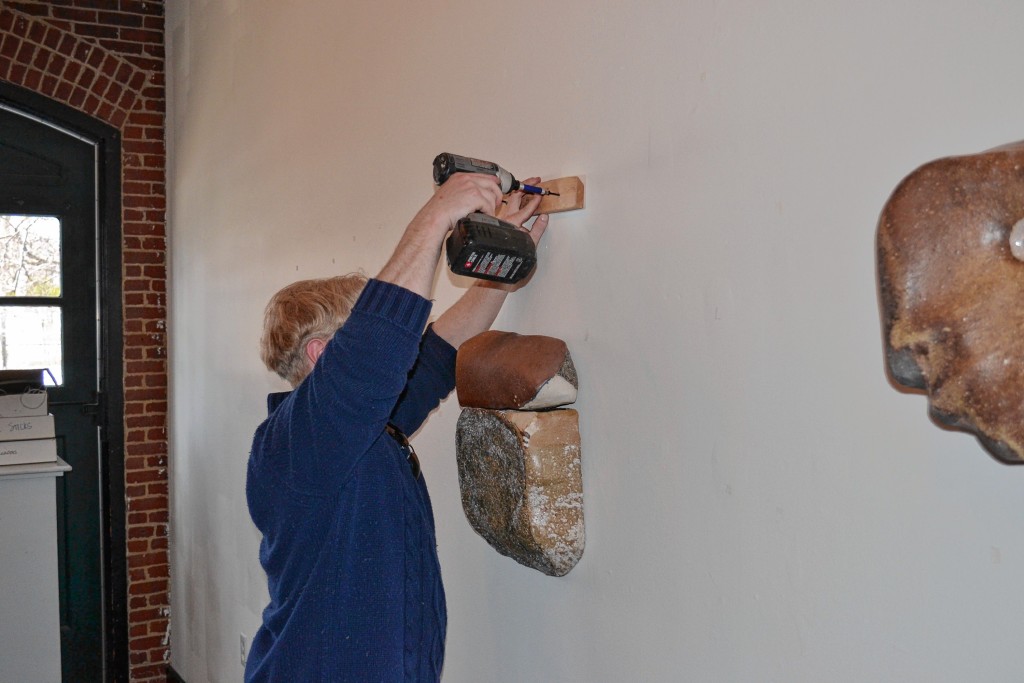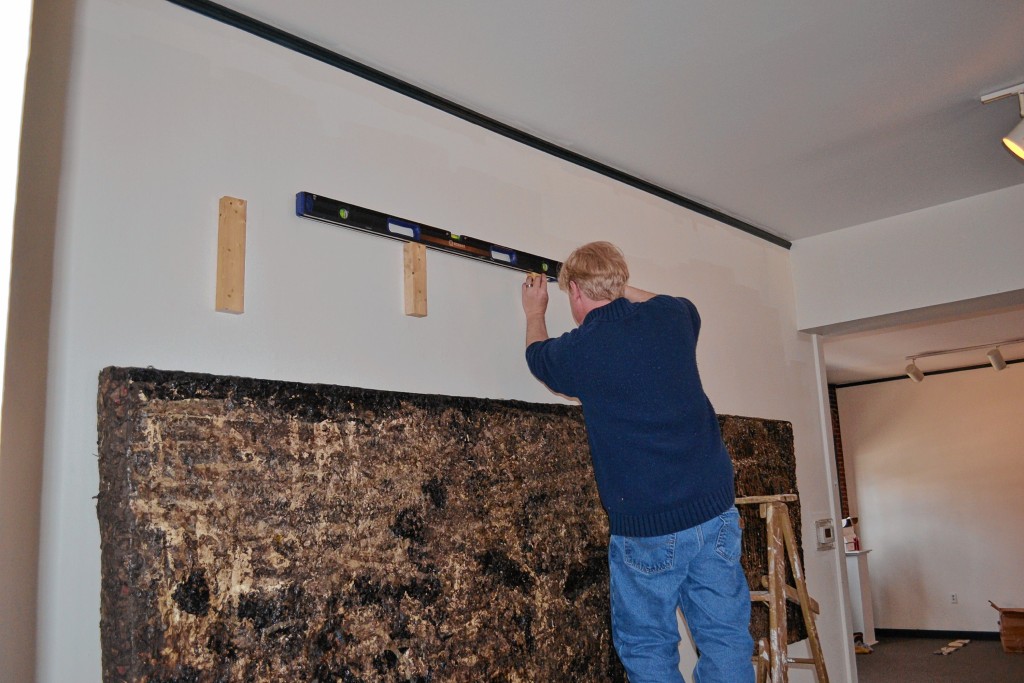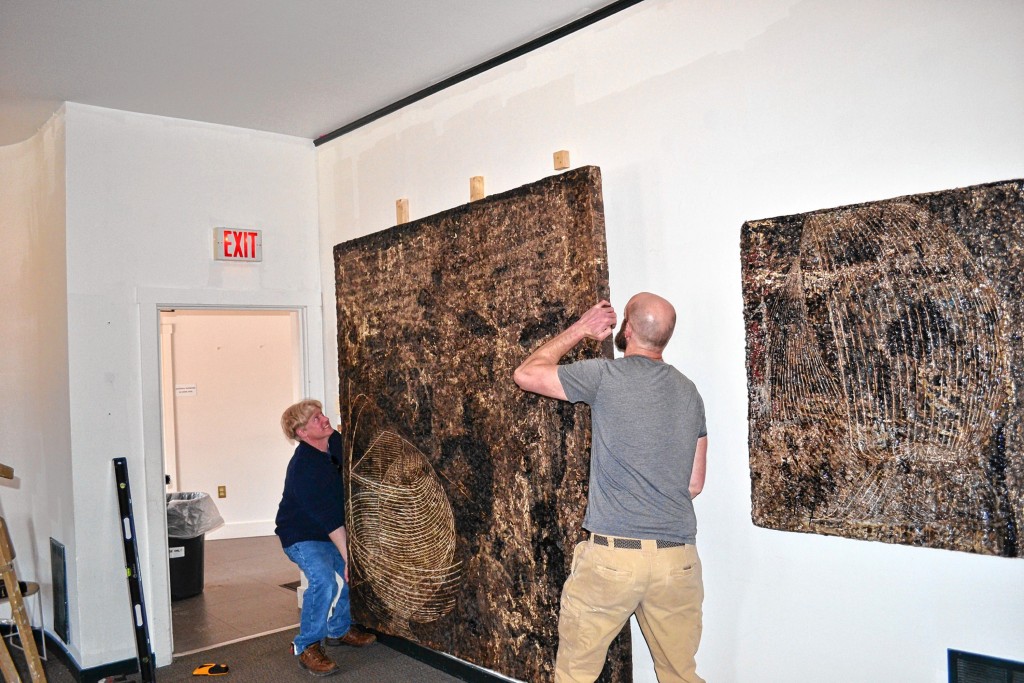Insider staff
When you walk into an art gallery, more often that not it’s to check out the work hanging on the walls – or on display if it’s too big, heavy or bulky to go on the walls.
Chances are, unless you’re an artie (that’s a foodie for the arts), you probably don’t pay much attention to the way the art is arranged, especially if it’s done right. And if you go back to the same gallery for the next show, it won’t be placed the exact same spots.
Now we’ve got you thinking. That’s good, because a little bit of thinking is what got us to this very point. You see, we go to galleries and art exhbitions all over the city and we’ve always been curious as to what goes into hanging a show – especially one that doesn’t just require a few picture hangers in the wall.
So when we saw that Kimball-Jenkins was going to be hosting the work of Al Jaeger and Paul Pollaro in the Carolyn Jenkins Gallery, we had to see what it took to get those hand-crafted pieces up on the wall.
If you aren’t familiar with either artist, Pollaro creates rather large squarish pieces that consist of oil paint and tar on wood. And it’s just like it sounds, heavy.
Jaeger works with materials like stoneware, porcelain, sand, gravel, glass, cobalt and other stuff that looks like it will work. And they come in all shapes and sizes.
So with a drill, stud finder, level, tape measure and a pencil, Ryan Linehan set out to hang another show.
But before even putting a screw in the wall, Linehan thinks it all through. There needs to be enough room for every piece, so they need to be laid out on the floor or leaning against the walls. How heavy is the piece? Can a simple screw in the wall hold it or does it require a stud to hold the weight?
“You can’t just put nails in the wall,” Linehan said. “You definitely have to plan this out.”
And finally, what will it look like to the audience? Like we’ve been getting at, this is a science of sorts.
“You try to make it as balanced and visually interesting as possible,” Linehan said.
It has to be visually appealing and have a flow to it. It’s all about the enjoyability factor.
“You want to consider how people will be looking at it,” Linehan said.
Pollaro’s stuff comes created on plywood with a framing system on the back that keeps it together – and can make it diificult to hang.
One was 82 inches tall and weighed well over 200 pounds. Safe to say, it took two people to hang it and quite a bit of math. With the ideal height for the middle of a piece like that to be at 60 inches, Linehan had to figure out how high the sections of 2x4s had to be to match up with the back framing and where the studs were. And just for safe measure, he put a couple screws in the top of the piece into the 2x4s – don’t worry, he got the artist’s permission.
“Part of it is practicality. Do I need to hit a stud or not? Part of it is aesthetics,” Linehan said.
Some of Jaeger’s peices came with wood and metal cleats attached to the back and the matching piece for the wall. Others, Linehan had to just figure out how to put them up.
In all, it took about three hours to lay it out and the span of two days to hang it. But if you go and check out the exhibit tomorrow, you would never have guessed what went into hanging it.
And the tricky thing about it all, is that every exhibit is different, so it’s always a trip back to the drawing board.

